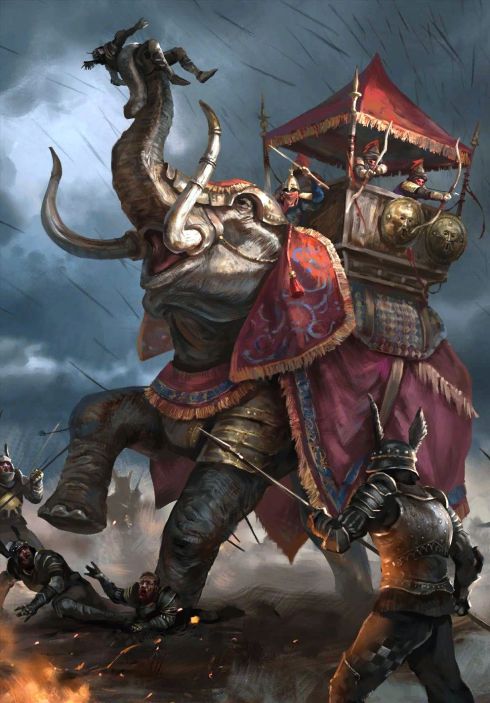Difference between revisions of "Incidental Damage"
Tao alexis (talk | contribs) |
Tao alexis (talk | contribs) |
||
| Line 1: | Line 1: | ||
[[File:Incidental Damage.jpg|right|490px|thumb]] | [[File:Incidental Damage.jpg|right|490px|thumb]] | ||
'''Incidental damage''' describes the unintended or accidental harm caused by monsters that are considerably larger in size than humanoid combatants. Due to their size and strength, as these creatures whirl and attack, their large limbs and appendages come into random contact with their opponents, causing [[Damage (hit points)|damage]]. With excessively-sized monsters, incidental damage can wipe out whole contingents of low-calibre combatants in a brief span of time. In some cases, damage results from the debris that's being thrown about by the monster's movements. | '''Incidental damage''' describes the unintended or accidental harm caused by monsters that are considerably larger in size than humanoid combatants. Due to their size and strength, as these creatures whirl and attack, their large limbs and appendages come into random contact with their opponents, causing [[Damage (hit points)|damage]]. With excessively-sized monsters, incidental damage can wipe out whole contingents of low-calibre combatants in a brief span of time. In some cases, damage results from the debris that's being thrown about by the monster's movements. | ||
| + | __TOC__ | ||
| + | To cause damage, a creature must have a weight of at least 1,000 lbs. Then, for each thousand lbs. of weight, the creature has the potential to cause 1 [[Hit Points|hit point]] of damage. The overall weight of creatures is rounded to the nearest thousand, so that a creature of 1,500 lbs. would cause 2 damage. Note that such creatures, when fighting one another, cause damage to one another on account of this weight. | ||
| + | |||
| + | == Calculating Damage == | ||
| + | Any opponent of a creature | ||
Revision as of 18:07, 16 August 2023
Incidental damage describes the unintended or accidental harm caused by monsters that are considerably larger in size than humanoid combatants. Due to their size and strength, as these creatures whirl and attack, their large limbs and appendages come into random contact with their opponents, causing damage. With excessively-sized monsters, incidental damage can wipe out whole contingents of low-calibre combatants in a brief span of time. In some cases, damage results from the debris that's being thrown about by the monster's movements.
Contents
To cause damage, a creature must have a weight of at least 1,000 lbs. Then, for each thousand lbs. of weight, the creature has the potential to cause 1 hit point of damage. The overall weight of creatures is rounded to the nearest thousand, so that a creature of 1,500 lbs. would cause 2 damage. Note that such creatures, when fighting one another, cause damage to one another on account of this weight.
Calculating Damage
Any opponent of a creature
